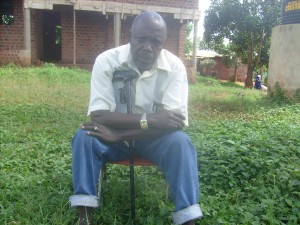by Satish Sekar © Satish Sekar (April 17th 2015)
The Sudan Problem
The disputes between the government of Sudanʼs President Gafaar Nimeiry and the Sudan Peopleʼs Liberation Army (SPLA) impacted upon its neighbours too. Milton Oboteʼs involvement in the war spilled over as Uganda was fighting its own Civil War due to Yoweri Museveniʼs refusal to accept Paulo Muwangaʼs decision to declare Obote the winner of the 1980 election.
Both Nimeiry and Obote were ousted from power in military coups in 1985. The Ugandan War was approaching its close, but Sudanʼs dragged on for the best part of another twenty years and it had serious ramifications for Uganda, both during Oboteʼs second term and afterwards. Sudanʼs problems had spilled over into Uganda (see Obote II – History Repeats at http://fittedin.org/fittedin/?p=1073).
Museveniʼs support for SPLA leader John Garang, whose politics veered from ʻleft to rightʼ, came at high price. Sudanʼs leader Omar al-Bashir retaliated by funding the vicious and depraved Joseph Kony and his Lordʼs Resistance Army, but that was still a long way off and came after both leaders signed a non-aggression pact in Kampala in 1990.
Oboteʼs Second Government
Obote soon showed that he had learned little from his first term as President of Uganda. He still could not brook dissent. Opponents were subject to arbitrary arrest, imprisonment in the notorious Luzira Prison among others. Torture was rife.
Oboteʼs government was tainted, especially Muwanga, as after declaring Obote the winner in elections that Museveni and others contested to the point of resuming the armed struggle, Muwanga joined Oboteʼs government as his Vice-President. Muwanga was later captured and accused of several offences ranging from kidnap to corruption.
An Extraordinary Story
The death toll will never be known, but victims piled up and not just political opponents. Among the victims of Oboteʼs second term were two young men with an extraordinary story. What started as a dispute between two families those of Mpagi Edward Edmary and William Wandyaka escalated into one of the most egregious miscarriages of justice of all time. Wandyaka was allegedly murdered in 1981 by Edmary and his cousin Fred Masembe.
Wandyakaʼs body had supposedly been subjected to a post-mortem examination. Edmary and Masembe stood trial for Wandyakaʼs murder. They told a strange story – an outrageous one. They were not only innocent, but there had been no crime. Wandyaka, they insisted was alive and well. Edmary even claimed that Wandyaka had attended the trial.
A Preposterous Injustice
It sounded preposterous, but time would eventually prove that Edmary and Masembe were indeed innocent and for the reason Edmary had claimed all along. Wandyaka was indeed alive and well throughout the judicial process – one that had claimed Masembeʼs life. Both Edmary and Masembe were sentenced to death.
Masembe died from complications after being weakened by malaria. He was denied medication, callously told that as he was going to be executed anyway, there was no point wasting medication on him. They were both jailed by a corrupt judicial system that facilitated and maintained an appalling injustice.
Vindicated
Masembe lived just long enough to see Obote deposed again, but it was scant consolation. It was already far too late for Fred Masembe. He died in prison for a crime that never occurred.
It took a change in government and 18 years on Death Row for a Presidential Commission to recognise the awful truth – Mpagi Edward Edmary and Fred Masembe were the victims of one of the most shameful miscarriages of justice ever.
Edmary was freed from Death Row. He is a valued member of The Fitted-In Project and is active opposing the death penalty as well as building a school to give the disadvantaged of Uganda a chance of a future.


Edward Edmary Mpagi is the Mandela of Uganda. Thank you for the background on his story.